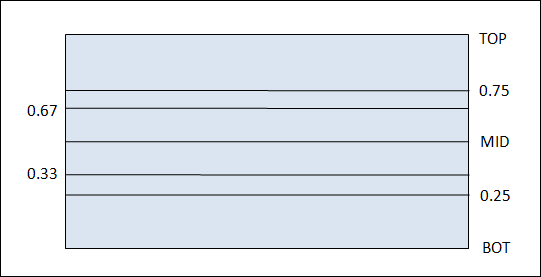CFAILURE |

|

|

|

|
|
CFAILURE |

|

|

|

|
CFAILURE - Output Request
The CFAILURE command can be used in the I/O Options or Subcase Information sections to request failure index output for elements referencing PCOMP, PCOMPP or PCOMPG properties for all subcases or individual subcases, respectively.
CFAILURE (format_list,NDIV=ndiv) = option
Argument |
Options |
Description |
||
|---|---|---|---|---|
format |
<H3D, OPTI, OP2, blank> Default = blank |
H3D: |
Results are output in Hyper3D format (.h3d file). |
|
OPTI: |
Results are output in OptiStruct results format (.cstr file). |
|||
OP2: |
Results are output in Nastran output2 results format (.op2 file). |
|||
blank: |
Results are output in all active formats, for which the result is available. |
|||
|
||||
ndiv |
<INTEGER> Default = 1 |
Number of divisions where composite failure indices are calculated. The maximum number of NDIV allowed in the calculation is 5. (Comments 1 and 7) |
||
|
||||
Option |
<YES, ALL, NO, NONE, SID, PSID> Default = YES |
YES, ALL, blank: |
Results are output for all elements. |
|
NO, NONE: |
Results are not output. |
|||
SID: |
If a set ID is given, results are output only for elements listed in that set. |
|||
PSID: |
If a property set ID is given, results for the elements referencing properties listed in the property set are output. |
|||
| 1. | The following table shows the planes where failure indices (FI) are calculated for different NDIV values. BOT, MID and TOP represents the bottom, middle and top planes of an individual ply. Digital numbers represents the relative distance of a plane/division from the bottom of a ply. |
NDIV |
Planes where FI are calculated |
1 |
MID |
2 |
BOT, TOP |
3 |
BOT, MID, TOP |
4 |
BOT, 0.33, 0.67, TOP |
5 |
BOT, 0.25, MID, 0.75, TOP |

Figure 1: NDIV planes of an individual ply
| 2. | When CFAILURE is not present, composite strength ratios are not output. CSTRESS and CSTRAIN entries cannot be used to request failure indices. |
| 3. | Multiple formats are allowed on the same entry, these should be comma separated. If a format is not specified, this output control applies to all formats defined by the OUTPUT command, for which the result is available. See Results Output for information on which results are available in which formats. |
| 4. | On the PCOMP or PCOMPG bulk data entries the SOUT field must be set to YES and on the PCOMPP entry, the SOUT field on the corresponding PLY entry should be set to YES to activate failure index calculation for the corresponding ply. Also, the FT and SB fields and allowable stress (or strain) fields on the referenced materials should be defined. |
| 5. | For plies defined on a PCOMPG bulk data entry, the results are grouped by GPLYID. |
| 6. | For optimization, the frequency of output to a given format is controlled by the I/O option OUTPUT. |
| 7. | The NDIV field is supported for static and normal modes analysis only. |
| 8. | Multiple instances of this card are allowed; if instances are conflicting, the last instance dominates. |
See Also: